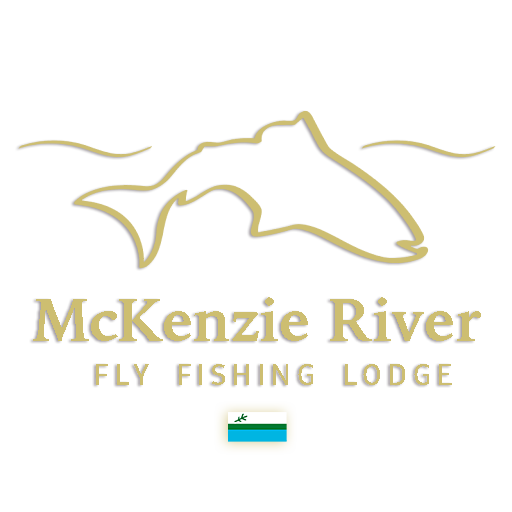The Water
Located to the north-northwest of the Smallwood Reservoir, our waters serve as migratory routes for fish moving between the Smallwood Reservoir, through the Murray Lake system, and up past McKenzie River Lodge to spawn in our rivers. We offer access to 30 miles of water system, which includes three rivers – the McKenzie, Quartzite, and Comeback ( each unique in terms of size, water speed, and bottom makeup) and three lakes – Andre, Montgomery, and Comeback.
The water system drains from our northwest from Marion River, entering Comeback Lake, Comeback River, into Montgomery Lake, and on to Andre Lake. Quartzite River drains into Andre lake halfway down its western shore. The watershed exits Andre Lake past McKenzie River Lodge into the McKenzie River, which begins several hundred yards behind the camp.
Fishing the McKenzie River
Each river section has its own variety of water and bottom conditions, so there’s a wide range of water suited to dry fly fishing, casting wet flies or streamers, some trolling short still water sections, and nymphing. A walking trail system utilizes older caribou paths meandering alongside the rivers whenever possible, as an alternative to wading some shoreline sections. We often have a boat or two positioned at the slower sections for those wishing to reduce the walking time or prefer to troll or reach the middle portions of the still-water sections. For most sections of our rivers, there is ample casting room whether you prefer to fish along the rocky shorelines or wade the river width in some sections.
The river ranges between 60 to 200 feet wide. Riffles range from one to three feet deep, with holes varying from four to seven feet in depth. Holes can be 5 to 60 feet across. Virtually every client will attest to the quality of this river in terms of how clear and varied the water flow is. This water system faces little fishing pressure, and there’s enough excellent fishable water to offer a surprise at any moment. Spring season finds the lake surface waters hovering between 48 – 55 ° F, and throughout July and August will vary between 52 – 66 ° F over the last couple of seasons. The river water fluctuates in temperature daily, ranging between 54 – 64 ° F for the season. Weather conditions can quickly impact water temperature and fish behaviour. Our brook trout are most active at temperatures in the 50 – 55 ° F. If river temperatures reach 59 ° F or more, brook trout are sluggish. Various patterns must be tried to turn on what can be stubborn warm fish. More of them move from being scattered throughout river pockets and can be found in the deeper holes and faster chutes. The brook trout fishing then comes as more of a challenge until rains or overcast days quickly change the temperature. Ouananiche seems to be able to remain fishable at slightly higher water temperatures, but they too will tend to lie in the deepest holes or move out of the river overnight and into Andre Lake, so flies and presentation change accordingly.

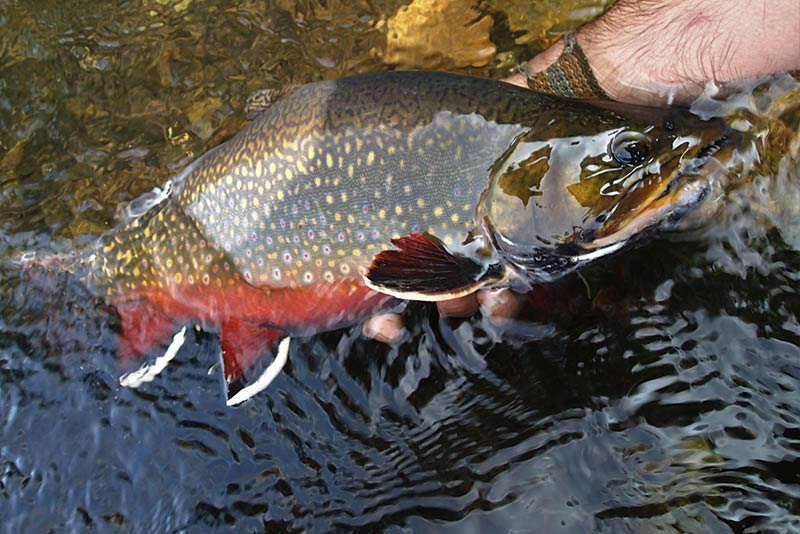
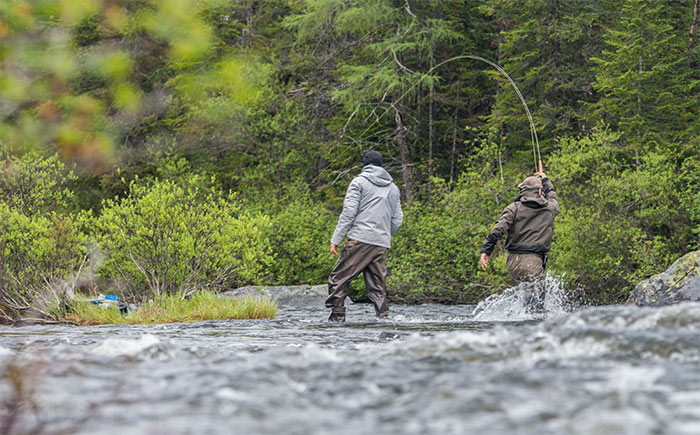
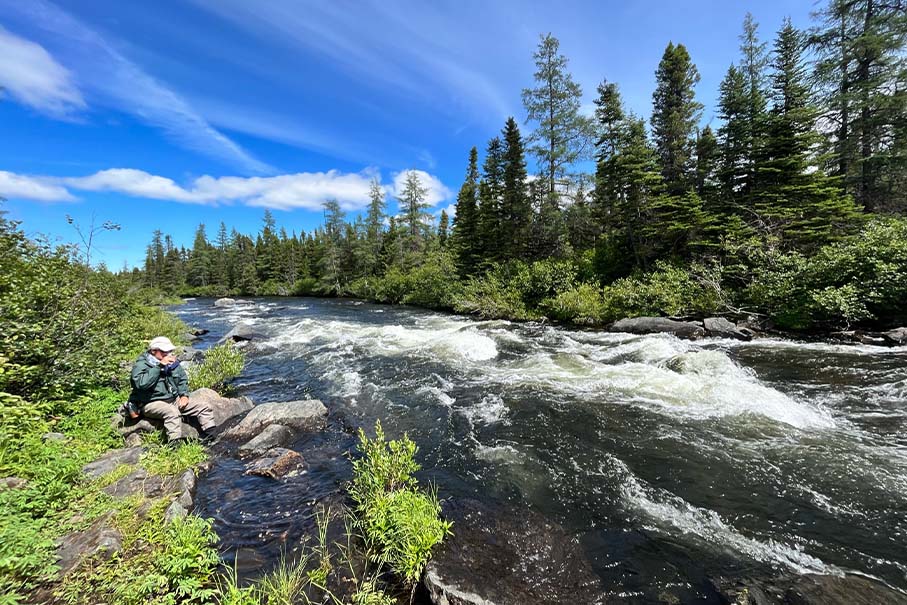
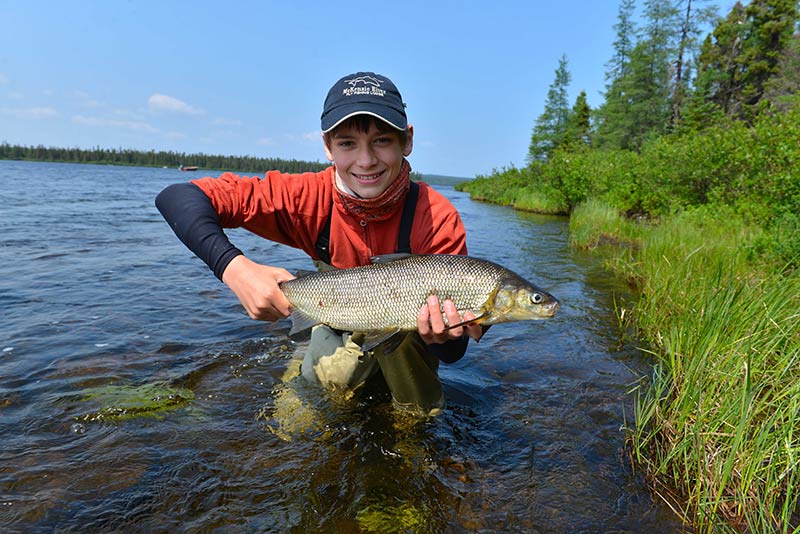

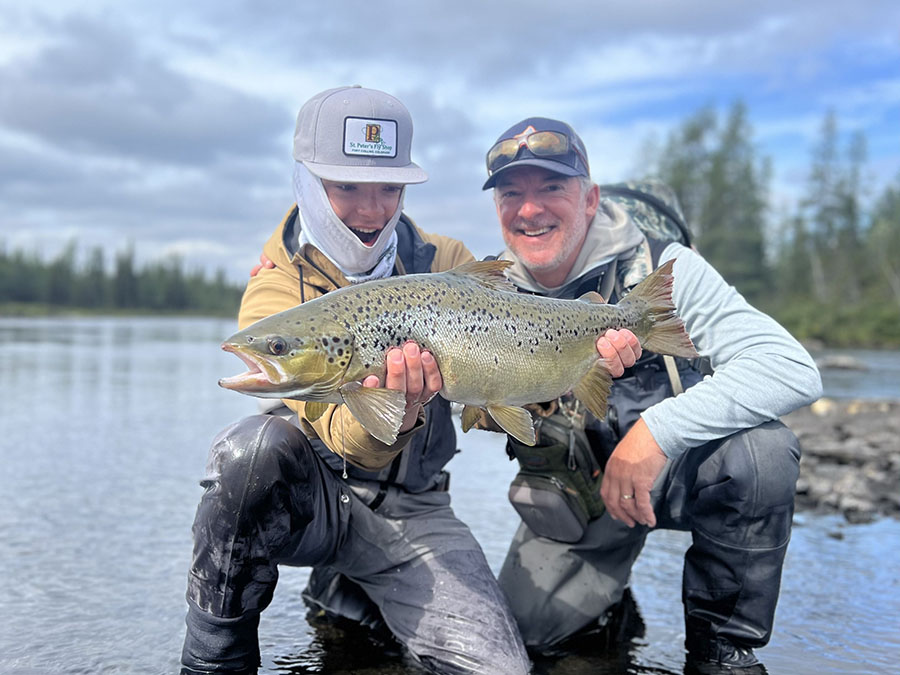
The McKenzie poses the most challenging wading of our three rivers. The Comeback River would present the easiest wading, and Quartzite ranks between the two. The sections of McKenzie River available to anglers will depend on their mobility and their preference of methodically working water with a multitude of fly types or covering more area in a searching pattern with fewer fly patterns. Wading the McKenzie means you must pay attention to where you tread. Most sections of the McKenzie are better handled with studded boots, and wading staff is a definite must. Rounded stones litter the shorelines and shallower waters, and algal growth during July and August is just enough to make sure you pay attention. In some short sections, sharper-edged stones at varying angles demand your close observation. The spring ice movements mean that rocks can be rolled around differently each season, and some can be surprisingly unstable regardless of their size.
The upper portion of the McKenzie is relatively easy to wade, increasing in difficulty as you move downstream. Fishing can begin about 200 yards behind the lodge. Clients from 10 to 84 years old have fished the top section. Some clients are better served having a short boat taxi to the head of the river, while most walk a ten to fifteen-minute trip. This section is about 400 yards long by 150 yards wide and can be crossed at several places.
It is extremely easy to spend an entire day picking apart this very productive section from either side. The cooler the water temperature, the greater the variety of fish lurking in its holes and riffles. Five species are present to one degree or other at any one time in the McKenzie River, often occupying niches in the same holes. Landlocked salmon (ouananiche), brook trout, lake trout, northern pike, and lake whitefish can be caught on a wide range of flies and presentations. It is possible in some stretches of water to visually locate a variety of fish, and each hook set could yield something different. Each day can bring a new number of migratory fish upriver, which seem to hole up in this top portion before moving northwards through Andre Lake. Other fish seem to spend two to seven weeks occupying holes around the top section, as evidenced by our tagging of ouananiche and brook trout during the 2009 season. Some fish will spawn in the top section at season’s end. Lake species often move into the top portion during the early season, for overnight feeding forays, or when the river water significantly cools during the latter half of summer.
The middle section of the McKenzie begins at the lower end of a still water separating it from the top portion. A walking trail takes you around the still water, and the river downstream (Ruby’s Run) has the water narrowing through a large boulder-strewn neck and shallower riffle with pockets of water up to four or six feet in depth. This tumbles over a low rock ledge into a large pool, then a long, large shallower riffle averaging two feet of water. Wading here is more uneven and demands your attention. This section offers predominantly brook trout and ouananiche fishing that builds in numbers as the season wanes. Vegetation grows to the water’s edge, but casting is manageable in most spots. A long stretch of shallow white riffle takes you to a boat positioned to carry some clients onward downriver to fish water that sees less than ten to twenty anglers per season.
The boulder-strewn lower river portion alternates between riffles ending into deeper river wide pools, and short calm water stretches for another mile or two. Much of the slightly faster portions are covered by wading, and there are numerous small pockets of deeper water. Fish here are generally on the way upriver towards McKenzie River Lodge, so it is not necessary to venture this far downriver to hook trout or salmon, since they are coming up to us each day. Clients capable of walking and wading have access to predominantly ouananiche and brook trout earlier than they arrive in the top portion. Larger ouananiche and colorful male brook trout can be found here converging from a vast water system throughout the second half of the season. Occasionally lake trout can be found in some of the holes, and lake whitefish in the calm sections between riffles and drop-offs.
Burt Gillis, fishing the McKenzie River watershed
